Overhead crane for sale Jamaica. Comprehensive guide to purchasing industrial overhead cranes in the Jamaica. Get your customized industrial crane design.
Comprehensive Guide to Purchasing Industrial Overhead Cranes in the Jamaican Market
In the intricate web of industries that drive Jamaica's economy, there exists a silent workhorse that plays a pivotal role – the industrial overhead crane. These powerful machines are the unsung heroes behind the scenes, facilitating the movement of goods, machinery, and materials that are the lifeblood of various sectors. From manufacturing plants to construction sites, from bustling ports to the heart of agriculture, overhead cranes are the dependable giants that ensure the wheels of industry keep turning.
But selecting the right overhead crane isn't a one-size-fits-all endeavor. The unique demands of each industry and application call for a tailored approach. Safety, efficiency, and compliance with Jamaican regulations are non-negotiable factors that must be at the forefront of your decision-making process.
Why Overhead Cranes Matter
Before we dive into the intricacies of selecting the perfect overhead crane for your specific needs, it's essential to understand why these mechanical marvels matter. Overhead cranes are indispensable tools that significantly impact the productivity, safety, and overall performance of countless businesses across Jamaica.
- Efficiency: Overhead cranes streamline operations by swiftly and precisely moving heavy loads, reducing manual labor and minimizing downtime. This efficiency translates to increased productivity and cost savings.
- Safety: Safety is paramount in any industrial setting, and overhead cranes are designed with safety features to protect both workers and valuable assets. When used correctly, they minimize the risks associated with heavy lifting.
- Versatility: Overhead cranes come in various types, each suited to specific applications. This versatility ensures that businesses can find a crane tailored to their unique needs.
- Compliance: Adhering to Jamaican regulations and standards is not just a matter of legality; it's a commitment to creating a safer work environment. Choosing the right overhead crane ensures compliance with Jamaican safety regulations.
The Purpose of This Guide
Now that we've established the significance of overhead cranes let's discuss the purpose of this comprehensive guide. Its aim is simple yet profound: to assist you, the reader, in selecting the right overhead crane for your specific requirements, regardless of the industry you operate in. Whether you're involved in manufacturing, construction, agriculture, warehousing, or any other sector, this guide is your compass in navigating the complex landscape of overhead crane selection.
Safety, Efficiency, and Compliance
Before we embark on this journey, it's vital to emphasize the three pillars that underpin every decision you'll make when it comes to overhead cranes: safety, efficiency, and compliance. These are not mere buzzwords but the cornerstones of successful and responsible crane use.
Safety is paramount because the well-being of your workforce is non-negotiable. An overhead crane that prioritizes safety minimizes the risk of accidents and injuries. Efficiency is the key to competitiveness, ensuring that your operations run smoothly and cost-effectively. Compliance with Jamaican regulations is not just a legal requirement but a moral obligation to protect your employees and the environment.
With safety as our guiding principle and efficiency as our north star, we embark on this journey through the realm of industrial overhead cranes in the Jamaican market. So, fasten your seatbelts, and let's explore how to find the perfect crane that meets your needs and helps your business soar to new heights.
Chapter 2: Types of Overhead Cranes
In the world of overhead cranes, diversity reigns supreme. These mechanical marvels come in various forms, each tailored to specific applications and industries. To choose the right overhead crane for your Jamaican business, it's essential to explore the various types available and understand how they align with your needs. Let's embark on this journey:
Single Girder Overhead Cranes
Overview of Single Girder Cranes
Single girder overhead cranes, as the name suggests, feature a single horizontal beam or girder that supports the hoist and trolley. They are known for their simplicity, cost-effectiveness, and suitability for various applications.
Benefits:
- *Cost-Effective*: Single girder cranes are often more budget-friendly than their double girder counterparts.
- *Space-Efficient*: They require less overhead clearance, making them ideal for facilities with limited space.
- *Ease of Installation*: Their simplicity means faster installation times, minimizing downtime.
Limitations:
- *Lower Capacity*: Single girder cranes typically have lower load capacities compared to double girder cranes.
- *Limited Span*: They are better suited for shorter spans, making them less suitable for very long spans.
Typical Industries and Applications Suited for Single Girder Cranes in Jamaica
Single girder overhead cranes find their place in a variety of Jamaican industries and applications:
- Manufacturing: Ideal for moving raw materials, components, and finished products within a manufacturing facility.
- Warehousing: Efficient for loading and unloading goods, especially in smaller warehouses.
- Maintenance Workshops: Well-suited for handling equipment and machinery during repair and maintenance tasks.
- Small Ports: Used for light to moderate cargo handling in smaller port facilities.
Double Girder Overhead Cranes
Overview of Double Girder Cranes
Double girder overhead cranes feature two horizontal beams or girders that provide added strength and stability. They are known for their high load-carrying capacity and versatility.
Benefits:
- *High Capacity*: Double girder cranes can handle significantly heavier loads than single girder cranes.
- *Longer Span*: They are suitable for longer spans, making them ideal for larger facilities.
- *Durability*: Designed for heavy-duty applications, they are built to withstand demanding tasks.
Limitations:
- *Higher Cost*: Double girder cranes are generally more expensive to purchase and install.
- *More Headroom*: They require more vertical clearance, which may not be suitable for facilities with limited height.
When to Choose Double Girder Cranes for Specific Applications in Jamaica
Consider double girder overhead cranes for the following applications in Jamaica:
- Heavy Manufacturing: When dealing with large and heavy components or products.
- Ports and Shipping: Handling bulk cargo or containers in larger port facilities.
- Construction: Lifting heavy construction materials and equipment.
- Mining: Transporting substantial loads of materials in mining operations.
Gantry Cranes
Explanation of Gantry Cranes
Gantry cranes are versatile cranes with legs or supports that can move on wheels or rails. They provide mobility and flexibility compared to other crane types.
Benefits:
- *Mobility*: Gantry cranes can be moved around a facility or job site, offering flexibility in load handling.
- *Adaptability*: They can be used in both indoor and outdoor settings.
- *High Capacity*: Gantry cranes come in various sizes, some with high load capacities.
Limitations:
- *Installation Complexity*: Setting up gantry cranes may require more time and planning due to their mobility.
- *Space Requirements*: They need sufficient floor space for movement and operation.
Key Applications and Industries Where Gantry Cranes Excel in Jamaica
Gantry cranes are versatile and find application in various Jamaican industries:
- Construction: For moving heavy construction materials and equipment around job sites.
- Warehousing: Efficiently handling and stacking goods in warehouses.
- Manufacturing: In facilities with changing layouts or outdoor storage needs.
- Ports: Handling cargo at smaller ports or in areas where fixed cranes are not suitable.
Jib Cranes
Overview of Jib Cranes
Jib cranes consist of a horizontal boom (jib) that rotates around a vertical pillar or wall-mounted bracket. They are known for their flexibility in smaller work areas and specialized tasks.
Benefits:
- *360-Degree Rotation*: Jib cranes offer full-circle rotation, providing access to a wide work area.
- *Space Efficiency*: They take up minimal floor space, making them suitable for smaller facilities.
- *Easy Installation*: Installation is relatively straightforward, and they require less structural support.
Limitations:
- *Limited Reach*: Jib cranes have a limited reach compared to other crane types.
- *Lower Load Capacity*: They are typically designed for lighter loads and specific tasks.
Ideal Industries and Scenarios for Using Jib Cranes in Jamaica
Jib cranes are well-suited for specific tasks and industries in Jamaica:
- Workshops: For moving materials and equipment within maintenance and repair workshops.
- Machine Shops: Handling components and parts around machine shop workstations.
- Loading Docks: Assisting in loading and unloading goods from trucks in smaller loading areas.
- Assembly Lines: Aiding in assembly processes where localized lifting is required.
Chapter 1: Understanding Your Overhead Crane Needs
In the diverse tapestry of Jamaica's industrial landscape, overhead cranes are indispensable tools that find their way into various sectors and applications. To select the perfect overhead crane for your specific needs, the first step is to identify your industry and application. Let's take a closer look:
Industries in Jamaica Using Overhead Cranes
Jamaica's industries are as diverse as its culture and landscapes. Some of the most common sectors that rely on overhead cranes include:
Manufacturing
- *Overview*: The manufacturing sector in Jamaica encompasses food processing, beverage production, chemicals, textiles, and electronics.
- *Applications*: Overhead cranes in manufacturing are used for material handling, positioning heavy machinery, and moving finished products within the production process.
- *Variations*: The choice of crane type varies based on the specific needs of each manufacturing facility. Single girder and double girder cranes are commonly used.
Construction
- *Overview*: The construction sector involves building infrastructure, commercial properties, and residential developments.
- *Applications*: Overhead cranes in construction lift and position heavy building materials, structural components, and equipment on construction sites.
- *Variations*: Gantry cranes and tower cranes are often used in construction projects for their lifting capabilities.
Ports and Shipping
- *Overview*: Jamaica's ports and shipping industry is a hub for international trade and logistics, handling cargo like containers and bulk goods.
- *Applications*: Overhead cranes in ports and shipping are essential for efficiently loading and unloading cargo from ships, transporting containers, and managing logistics within the port.
- *Variations*: Container handling cranes, ship-to-shore cranes, and gantry cranes are commonly used in port operations.
Mining and Bauxite
- *Overview*: Jamaica is renowned for its bauxite mining industry, crucial for global aluminum production.
- *Applications*: Overhead cranes in mining transport bauxite ore from mining areas to processing plants and perform maintenance tasks.
- *Variations*: Heavy-duty gantry cranes are typically used in the mining sector for their high capacity.
Agriculture
- *Overview*: Agriculture is a vital sector in Jamaica, producing crops like sugarcane, coffee, bananas, and citrus fruits.
- *Applications*: Overhead cranes in agriculture handle equipment maintenance and the movement of harvested crops and machinery.
- *Variations*: Jib cranes and gantry cranes are common in agricultural settings, especially for maintenance tasks.
Warehousing and Logistics
- *Overview*: The warehousing and logistics sector involves storage, distribution, and transportation of goods for domestic and international markets.
- *Applications*: Overhead cranes in warehousing stack and retrieve goods from high-bay storage systems, optimizing space and improving inventory management.
- *Variations*: Stacker cranes and bridge cranes are used to efficiently handle palletized goods.
These are just a few examples of the diverse industries that rely on overhead cranes in Jamaica. Each industry has its unique requirements, and the choice of overhead crane type and capacity depends on the specific tasks and applications within that industry.
In the next sections of our comprehensive guide, we'll delve deeper into the various types of overhead cranes available and how to determine the right one for your specific needs. Whether you're involved in manufacturing, construction, agriculture, or any other sector, understanding your industry and application is the first step towards selecting the ideal overhead crane that will enhance your operations and drive productivity.
How to Determine the Required Load Capacity
Determining the required load capacity for your overhead crane is a fundamental step in the selection process. Here's how to go about it:
- Identify the Maximum Load: Begin by identifying the maximum weight of the heaviest load your crane will need to lift. This should include not just the weight of the load itself but also any attachments or rigging that may be used.
- Consider Load Variability: Think about whether your loads will be uniform or if they will vary in weight. If there is variability, you'll need to account for the maximum potential weight.
- Future Growth: Consider your business's growth and future needs. If you anticipate handling heavier loads in the future, it's wise to choose a crane with a higher capacity than your current requirements.
- Factor in Safety Margins: It's essential to build in a safety margin when determining load capacity. This margin ensures that the crane can handle unexpected or dynamic loads without compromising safety.
Factors Affecting Load Capacity
Several factors can affect the load capacity requirements of your overhead crane:
- Material Type: The type of material you'll be lifting is a critical factor. Some materials, like dense metals, may be much heavier than others of the same volume. Ensure your crane can handle the density of the materials.
- Load Distribution: Consider how the load is distributed. A balanced load is generally easier to lift than an unevenly distributed one. The crane's load capacity should be sufficient to handle the worst-case scenario.
- Attachment and Rigging: Take into account any attachments or rigging that will be used with the crane. These accessories add weight to the load and must be considered when calculating capacity.
- Distance and Reach: The span and reach of your crane also affect its capacity. Longer spans and reaches may require higher-capacity cranes to maintain safe lifting practices.
Importance of Considering Future Growth and Load Variability
While it's essential to meet your current needs, it's equally crucial to plan for the future. Businesses evolve and expand, and your overhead crane should be capable of accommodating future growth and potential changes in your load requirements. Here's why future growth and load variability are significant:
- Cost-Efficiency: Investing in a crane with a slightly higher capacity than your current needs can be more cost-effective than frequently upgrading or replacing cranes as your business grows.
- Safety: Planning for future growth ensures that you maintain safe lifting practices even as your load requirements change. This contributes to a safer working environment.
- Adaptability: A crane designed to handle variability in load weights allows for more flexibility in your operations, accommodating a wider range of tasks without limitations.
- Long-Term Investment: Overhead cranes are a long-term investment. By considering future growth and load variability, you maximize the return on your investment by ensuring the crane remains useful as your business evolves.
As you embark on the journey of selecting the ideal overhead crane for your industry and application in Jamaica, remember that load capacity is a critical parameter that directly impacts safety and efficiency. By accurately assessing your current and future load requirements, you lay a solid foundation for making an informed decision that aligns with your business's growth and operational needs.
In the upcoming sections of our comprehensive guide, we'll delve into the various types of overhead cranes available and explore how each type caters to specific load capacity requirements. Whether you're lifting tons of materials in a manufacturing plant or managing variable loads at a bustling port, we'll guide you to the perfect crane for your needs.
Chapter 3: Customization and Tailoring
In our exploration of overhead cranes in the Jamaican market, we've covered the various types available and how they align with specific needs. Now, let's dive into the crucial aspects of customization and tailoring to ensure that your overhead crane not only meets industry standards but also aligns perfectly with your unique requirements.
Jamaican Industrial Regulations and Standards
Explanation of Relevant Jamaican Safety and Compliance Regulations
Before we delve into the customization process, it's vital to understand the regulatory landscape in Jamaica. Safety and compliance are paramount, and adherence to Jamaican industrial regulations is not just a legal requirement but also a moral obligation to protect your employees, assets, and the environment.
- Safety Standards: Jamaican industrial regulations encompass safety standards specific to overhead cranes. These standards outline requirements for design, manufacturing, installation, and ongoing maintenance to ensure safe crane operations.
- Certification: Overhead cranes must undergo certification by authorized bodies to verify compliance with Jamaican safety standards. This certification process involves rigorous inspections and testing to confirm that the crane meets safety requirements.
- Load Testing: Load testing is a critical component of compliance. Cranes must undergo load tests to demonstrate their capacity to safely lift and handle specified loads.
The Importance of Working with Certified Crane Suppliers in Jamaica
Selecting a certified crane supplier in Jamaica is of utmost importance for several reasons:
- Expertise: Certified suppliers have extensive knowledge of Jamaican safety regulations and compliance requirements. They can guide you through the process with confidence.
- Quality Assurance: Certified suppliers are committed to delivering cranes that meet or exceed safety standards, ensuring the highest level of quality and reliability.
- Peace of Mind: Partnering with a certified supplier provides peace of mind, knowing that your crane will be safe, compliant, and suitable for your needs.
Customizing Your Overhead Crane
Considerations for Tailoring Overhead Cranes to Your Specific Needs
While safety and compliance set the foundation, customization allows you to tailor your overhead crane to your exact operational needs. Here are considerations for customization:
- Load Capacity: Specify the exact load capacity needed for your operations, considering both current requirements and future growth.
- Span and Reach: Customize the span (distance between runways) and reach (horizontal travel) to suit your facility's layout and operational requirements.
- Lifting Speed: Determine the lifting speed required for efficient material handling within your specific processes.
- Controls: Choose the control system that aligns with your operational preferences, whether it's traditional pendant controls, radio remote controls, or advanced automation.
- Safety Features: Enhance safety with custom features such as overload protection, collision avoidance systems, and emergency stop mechanisms.
- Material and Coatings: Select materials and coatings that are suitable for your operational environment, such as corrosion-resistant finishes for coastal areas.
The Role of Crane Suppliers in Customization and Design
Certified crane suppliers in Jamaica play a pivotal role in the customization and design process:
- Consultation: Suppliers work closely with you to understand your unique needs and operational challenges, offering expert guidance on customization options.
- Engineering: They employ experienced engineers to design crane systems that align precisely with your specifications, ensuring safety and performance.
- Testing and Validation: Suppliers conduct rigorous testing to validate the performance of customized crane systems, including load testing and functionality testing.
- Installation and Commissioning: The supplier's team handles the installation and commissioning of the crane, ensuring it operates flawlessly in your facility.
Budget Considerations and Cost Implications of Customization
Customization can impact the overall cost of your overhead crane system. It's essential to consider the budget implications of customization and weigh them against the benefits of having a crane system perfectly tailored to your needs.
- Long-Term Investment: While customization may incur initial costs, it's a long-term investment that can enhance efficiency, safety, and productivity over the crane's lifespan.
- ROI: Assess the return on investment (ROI) by evaluating how customization impacts operational efficiency, labor costs, and safety.
- Budget Flexibility: Work with your supplier to explore customization options that align with your budget while meeting critical operational requirements.
Customization is a powerful tool that enables you to optimize your overhead crane for peak performance in Jamaican industries. It allows you to harness the full potential of this essential machinery, enhancing your operations' efficiency and safety.
In the upcoming sections of our comprehensive guide, we'll explore the process of finding the right supplier, requesting and comparing quotes, and ensuring that your customized overhead crane becomes a valuable asset to your business.
Chapter 4: Finding the Right Supplier
Selecting the right supplier for your overhead crane is a critical step in ensuring that your customized crane meets your specific needs while adhering to Jamaican safety and compliance standards. In this chapter, we'll guide you through the process of researching, evaluating, and ultimately choosing the best supplier for your overhead crane project.
Researching and Selecting Suppliers
How to Conduct Research on Overhead Crane Suppliers in Jamaica
The process of finding the right supplier begins with thorough research. Here's a step-by-step guide on how to conduct your research effectively:
- Online Research: Start by searching for overhead crane suppliers in Jamaica online. Visit their websites to gather initial information about their services, products, and capabilities.
- Industry Associations: Check if the suppliers are members of industry associations related to overhead cranes. Membership often indicates a commitment to industry standards and best practices.
- Customer Reviews and Testimonials: Look for customer reviews and testimonials on the supplier's website or third-party review platforms. This can provide insights into their reputation and customer satisfaction.
- References: Ask potential suppliers for references from past clients. Contact these references to inquire about their experiences with the supplier and the quality of their products and services.
- Certification and Compliance: Ensure that the supplier is certified and compliant with Jamaican safety and compliance regulations. Request documentation to verify their credentials.
Key Factors to Consider When Evaluating Suppliers
When evaluating potential overhead crane suppliers in Jamaica, consider the following key factors:
- Experience: Determine how long the supplier has been in the industry and whether they have experience in your specific sector or application.
- Product Range: Assess the range of overhead crane products and services offered by the supplier to ensure they align with your needs.
- Customization Capability: Evaluate the supplier's ability to customize crane systems to your specific requirements, including design and engineering expertise.
- Quality Assurance: Inquire about the supplier's quality assurance processes, including testing and validation of crane systems.
- Service and Support: Consider the level of after-sales service and support offered by the supplier, including maintenance and repairs.
- Availability of Spare Parts: Ensure that the supplier can provide spare parts and components for your crane system when needed.
- Reputation: Investigate the supplier's reputation within the industry, looking for any red flags or consistent positive feedback.
The Importance of Supplier Reputation and References
Supplier reputation is a crucial factor in selecting the right partner for your overhead crane project. A reputable supplier is more likely to deliver quality products and services and provide excellent customer support. Additionally, customer references can offer valuable insights into the supplier's track record and reliability.
Requesting and Comparing Quotes
How to Request and Evaluate Quotes from Potential Suppliers
Once you've identified potential suppliers, the next step is to request and evaluate quotes. Here's how to go about it:
- Provide Detailed Specifications: Clearly communicate your specific crane requirements, including load capacity, span, reach, controls, safety features, and any customization needs.
- Request Detailed Quotes: Ask suppliers to provide detailed quotes that outline the cost breakdown, including equipment, installation, and any additional services or features.
- Compare Quotes: Compare quotes from multiple suppliers, taking into account not only the initial purchase price but also long-term operating costs, maintenance, and support.
- Evaluate Warranty: Inquire about the warranty offered for the crane system and the coverage it provides.
- Negotiate Terms: Don't hesitate to negotiate terms with the suppliers. You may be able to secure a better deal by discussing pricing, payment schedules, and delivery timelines.
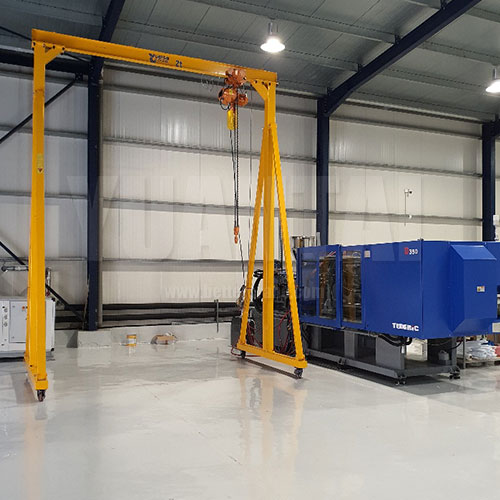
Customer feedback pictures
Factors to Consider Beyond the Initial Purchase Price
While the initial purchase price is a significant factor, it's essential to consider the following factors that can impact the overall cost of your overhead crane project:
- Maintenance and Repairs: Evaluate the expected maintenance and repair costs over the crane's lifespan. A reliable supplier should provide transparent information about these costs.
- Energy Efficiency: Consider the crane's energy efficiency, as it can affect your ongoing operational expenses.
- Downtime: Analyze how downtime for installation, maintenance, and repairs can impact your business operations and productivity.
- Supplier Support: Assess the level of after-sales support and service provided by each supplier, as this can impact the crane's long-term performance and cost-effectiveness.
Negotiating Terms and Securing the Best Deal
Negotiation is a standard part of the procurement process. When negotiating with potential suppliers, keep the following tips in mind:
- Be prepared to walk away if the terms are not favorable or if the supplier is unwilling to negotiate.
- Seek to establish a mutually beneficial partnership where both parties feel they are getting value.
- Consider the long-term relationship and the supplier's track record in providing ongoing support and service.
By effectively researching and evaluating potential suppliers and negotiating favorable terms, you can secure the best deal for your customized overhead crane project in Jamaica.
In the next chapter of our comprehensive guide, we'll delve into the installation, commissioning, and ongoing maintenance of your overhead crane system, ensuring that it operates at peak performance throughout its lifespan.
Chapter 5: Installation, Maintenance, and Safety
Now that you've selected the right overhead crane and supplier for your Jamaican industrial needs, it's crucial to ensure that your crane operates safely and efficiently throughout its lifespan. In this chapter, we'll explore the installation process, the importance of regular maintenance, and safety considerations for overhead crane operations.
Installation Process
Overview of the Crane Installation Process
The installation of an overhead crane is a complex and critical process that requires careful planning and execution. Here's an overview of the installation process:
- Site Assessment: A thorough assessment of the installation site is conducted to ensure it can support the crane's weight, including the runways and support structures.
- Structural Preparation: If needed, structural modifications are made to accommodate the crane's support system. This may include reinforcing the building's structure or adding support columns.
- Installation of Runways: The runways, which support the crane's movement, are installed and aligned precisely.
- Crane Assembly: The crane components, including the bridge, trolley, and hoist, are assembled and installed on the runways.
- Electrical and Controls: Electrical components, including power supply, controls, and safety systems, are installed and tested.
- Load Testing: The crane undergoes load testing to ensure that it can safely handle its specified load capacity.
- Commissioning: The crane is commissioned, and all systems are tested to ensure proper functionality.
The Role of Certified Installation Teams in Ensuring Safety and Compliance
The installation of an overhead crane is not a task for amateurs. It requires the expertise of certified installation teams who are well-versed in safety standards and compliance regulations. Here's why their role is crucial:
- Safety: Certified installation teams prioritize safety at every step of the installation process, reducing the risk of accidents.
- Compliance: They are knowledgeable about Jamaican safety regulations and ensure that the crane system meets or exceeds compliance requirements.
- Efficiency: Experienced teams can complete the installation efficiently, minimizing downtime for your operations.
Timeline Expectations for Crane Installation in Jamaica
The timeline for crane installation in Jamaica can vary based on factors such as the crane's complexity, customization requirements, and site readiness. On average, the installation process can take several weeks to a few months. It's essential to work closely with your crane supplier and installation team to establish a realistic timeline that considers your operational needs.
Maintenance and Inspection
The Importance of Regular Maintenance and Inspections
Maintenance and inspections are critical to ensuring the long-term performance and safety of your overhead crane. Here's why they are essential:
- Safety: Regular maintenance and inspections identify and address potential safety issues before they become hazards.
- Efficiency: Well-maintained cranes operate more efficiently, reducing downtime and improving productivity.
- Cost Savings: Proactive maintenance can extend the lifespan of your crane and reduce long-term operating costs.
Creating a Maintenance Schedule for Optimal Crane Performance
Developing a maintenance schedule is a proactive approach to crane care. Consider the following when creating a maintenance schedule:
- Routine Inspections: Regularly inspect all components, including hoists, trolleys, controls, and safety features, for signs of wear, damage, or malfunction.
- Lubrication: Proper lubrication of moving parts is essential for smooth crane operation. Follow manufacturer recommendations for lubrication intervals.
- Electrical Systems: Inspect and test electrical components to ensure they function correctly.
- Load Testing: Periodically perform load testing to verify that the crane's load capacity remains within specification.
Identifying Common Maintenance Challenges and Solutions
Common maintenance challenges for overhead cranes can include wear and tear of components, electrical issues, and the need for replacements or upgrades. Solutions may involve:
- Component Replacement: Timely replacement of worn or damaged components can prevent further damage and maintain crane performance.
- Upgrades: Consider upgrades to improve safety and efficiency, such as installing modern control systems or adding safety features.
- Operator Training: Ensure that crane operators are well-trained to minimize operator-induced wear and damage.
Safety Considerations
Safety Measures and Protocols When Working with Overhead Cranes
Safety is paramount when working with overhead cranes. Implement the following measures and protocols to maintain a safe working environment:
- Operator Training: Provide comprehensive training for crane operators to ensure they understand safe operating procedures and can respond to potential hazards.
- Load Limitations: Strictly adhere to the crane's load capacity limitations to prevent overloading, which can lead to accidents.
- Visual Communication: Use clear visual communication methods, such as signals and signage, to alert personnel to crane movements.
- Maintenance Records: Maintain detailed records of maintenance and inspections to track the crane's condition and identify potential issues.
- Emergency Procedures: Establish emergency procedures and protocols for responding to crane-related incidents.
Training Requirements for Crane Operators and Maintenance Personnel
Training is a fundamental component of crane safety. Ensure that:
- Crane operators are trained and certified to operate the specific type of crane they work with.
- Maintenance personnel receive specialized training in crane maintenance, troubleshooting, and repairs.
Ensuring Compliance with Jamaican Safety Standards and Regulations
Compliance with Jamaican safety standards and regulations is non-negotiable. Ensure that your overhead crane operations adhere to the following:
- Jamaican Industrial Safety Standards specific to overhead cranes.
- Workplace safety regulations that apply to your industry and facility.
- Regular inspections and audits to verify compliance.
By prioritizing safety, regular maintenance, and compliance with Jamaican safety standards, you can create a work environment that protects your employees, equipment, and operations.
In the next and final chapter of our comprehensive guide, we'll wrap up by emphasizing the value of ongoing safety, maintenance, and compliance in ensuring the continued success of your overhead crane operations in Jamaican industries.
Conclusion
In this comprehensive guide to overhead cranes in Jamaica, we've taken you on a journey through the world of overhead cranes, from understanding the diverse needs of various industries to selecting the right crane type, customizing it to your specifications, finding the ideal supplier, and ensuring safe and efficient operations. Let's recap the key points and emphasize the value of making informed decisions when purchasing overhead cranes in Jamaica.
Recap of Key Points
Throughout this guide, we've covered essential aspects of overhead cranes:
- Understanding Your Needs: Identifying your industry, application, and load capacity requirements is the first step in selecting the right overhead crane.
- Types of Overhead Cranes: We explored single girder, double girder, gantry, jib, and monorail cranes, along with their benefits and ideal applications in Jamaica.
- Customization and Tailoring: Customization allows you to fine-tune your crane to meet your unique needs while ensuring compliance with Jamaican safety standards.
- Finding the Right Supplier: Thorough research and evaluation of suppliers, along with effective negotiation, are crucial to securing the best crane for your business.
- Installation, Maintenance, and Safety: Understanding the installation process, establishing a maintenance schedule, and prioritizing safety are vital for the long-term success of your overhead crane operations.
Make Informed Decisions
Purchasing an overhead crane is a significant investment that impacts the efficiency, safety, and productivity of your operations. We encourage you to make informed decisions based on your specific needs and objectives. Here's why it matters:
- Safety: Prioritizing safety not only protects your employees but also prevents costly accidents and disruptions.
- Efficiency: The right overhead crane can streamline your material handling processes, reducing downtime and increasing productivity.
- Long-Term Benefits: Investing in a crane tailored to your needs ensures long-term benefits, including reduced operational costs and improved ROI.
The Long-Term Benefits
By choosing the right overhead crane for your specific needs in Jamaican industries, you set the stage for long-term success. Here are the enduring benefits:
- Efficiency: Your operations become more efficient as the crane optimally handles your materials and products.
- Safety: A well-maintained and properly operated crane minimizes the risk of accidents and injuries.
- Productivity: Improved material handling leads to increased productivity and, ultimately, higher profitability.
- ROI: Over time, the return on investment from a well-chosen overhead crane becomes evident in reduced operational costs and improved competitiveness.
In conclusion, overhead cranes play a pivotal role in various Jamaican industries, from manufacturing and construction to ports and shipping. By following the guidance in this comprehensive guide, you are well-equipped to make informed decisions when purchasing, customizing, and operating overhead cranes in Jamaica. Prioritize safety, efficiency, and compliance, and reap the long-term benefits of your investment.
Thank you for accompanying us on this journey through the world of overhead cranes, and we wish you success in your endeavors to enhance your business operations with this indispensable machinery.



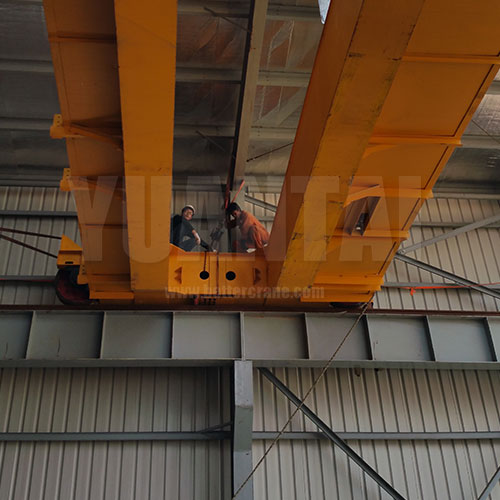
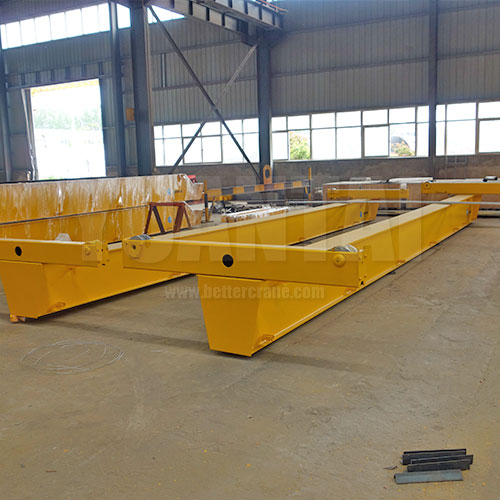
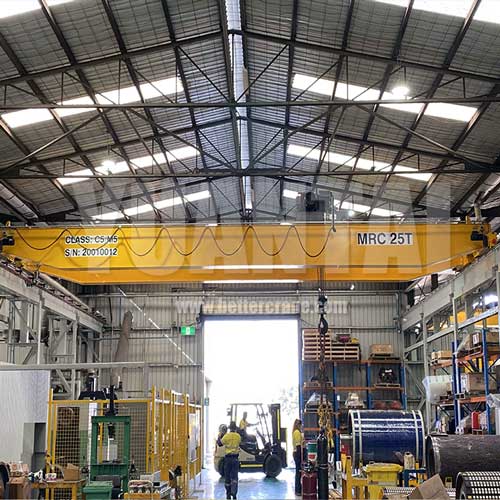
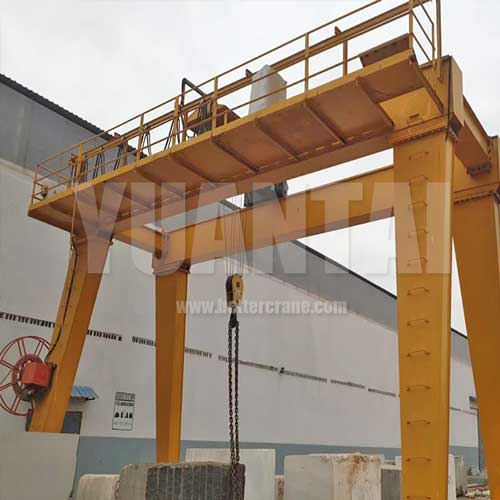
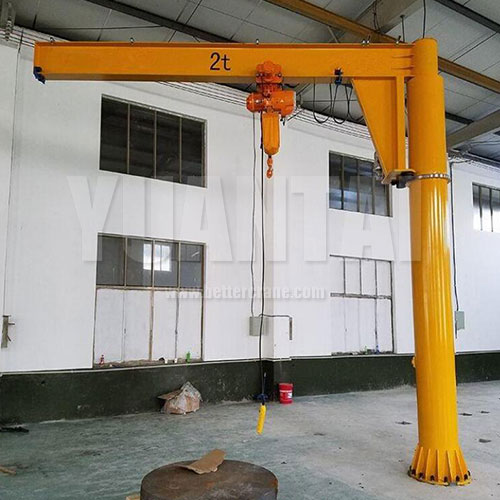

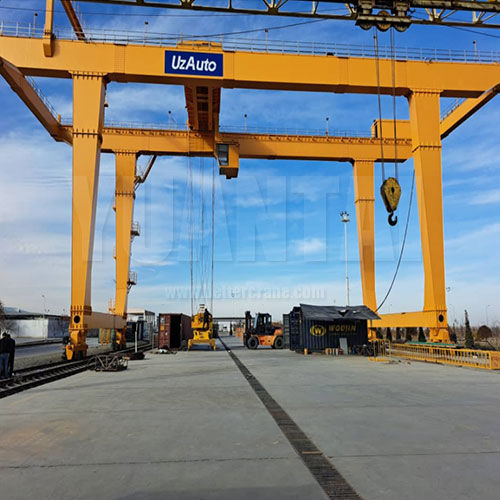
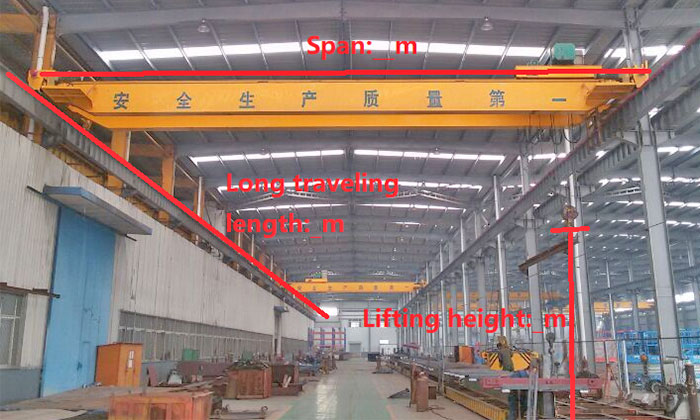
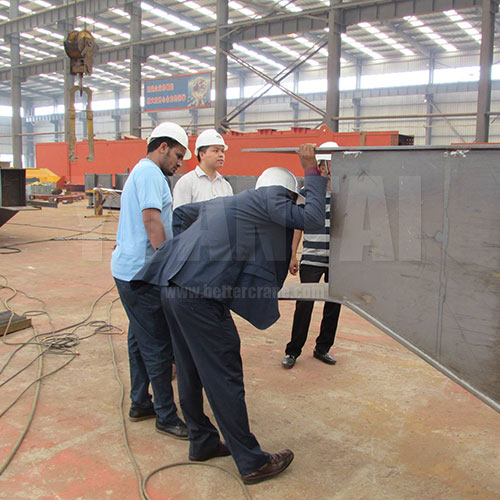
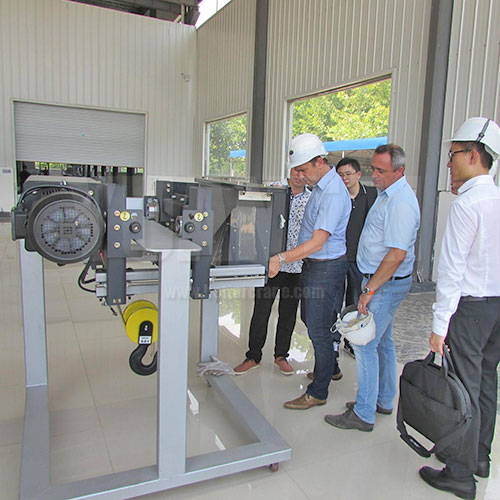
 Customer feedback pictures
Customer feedback pictures